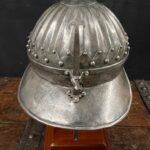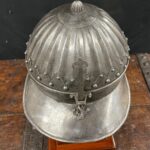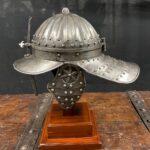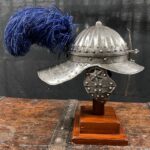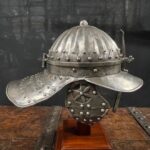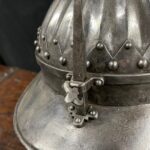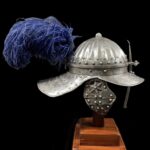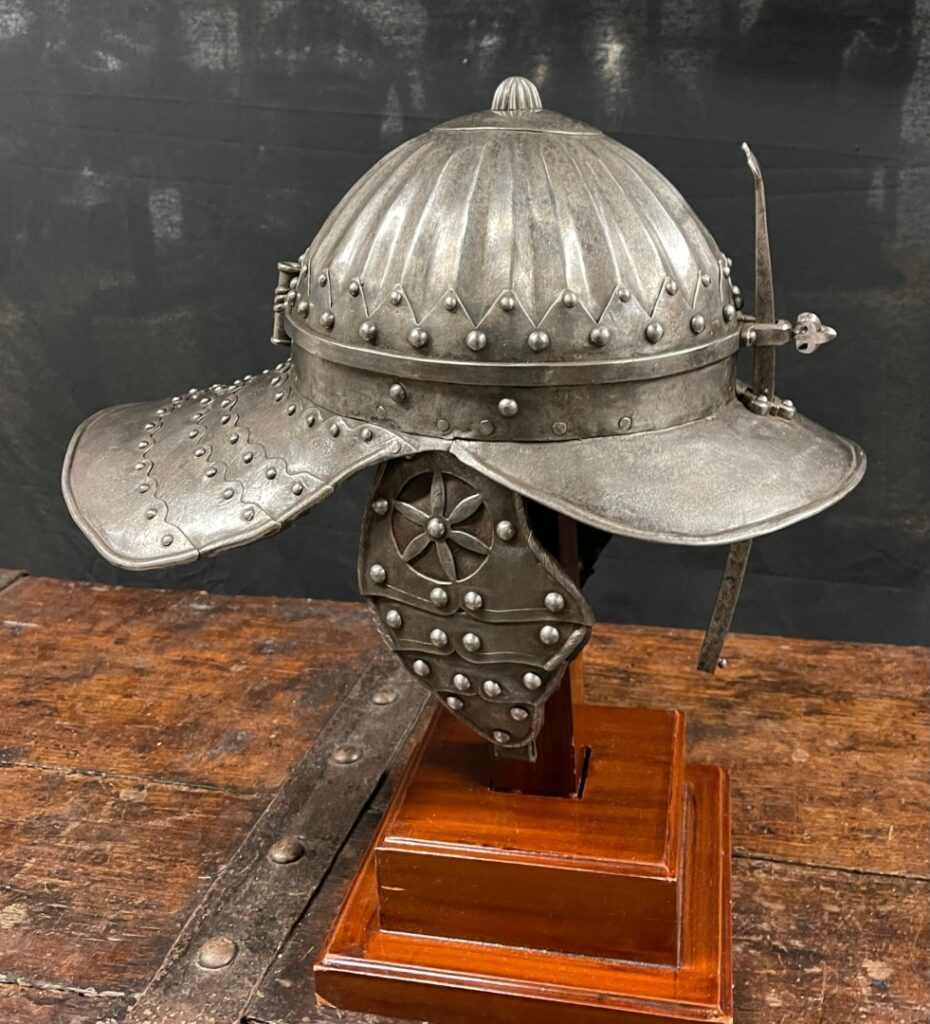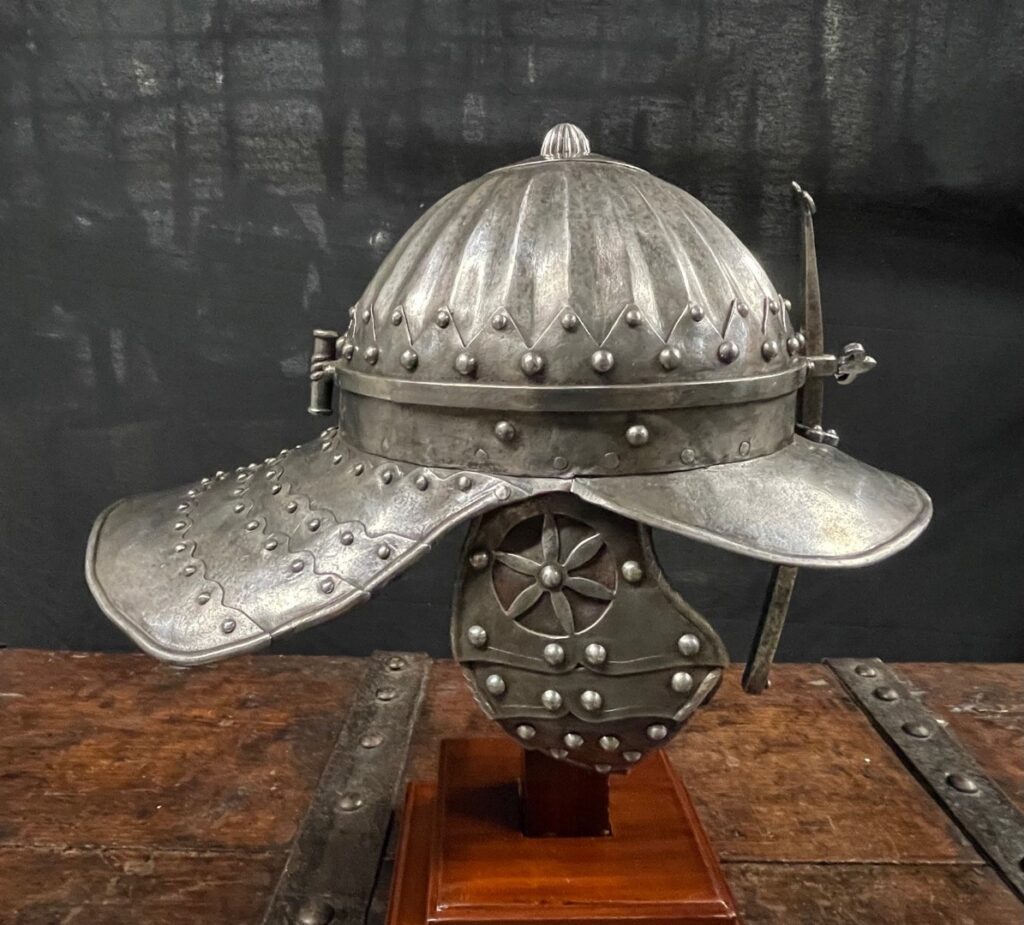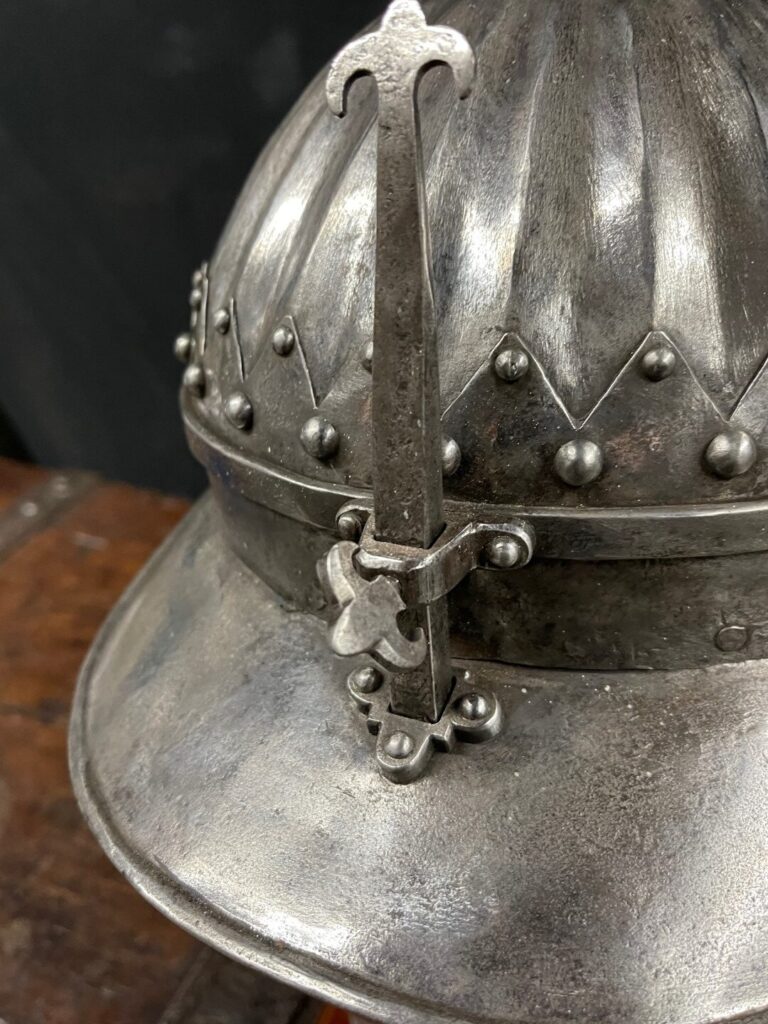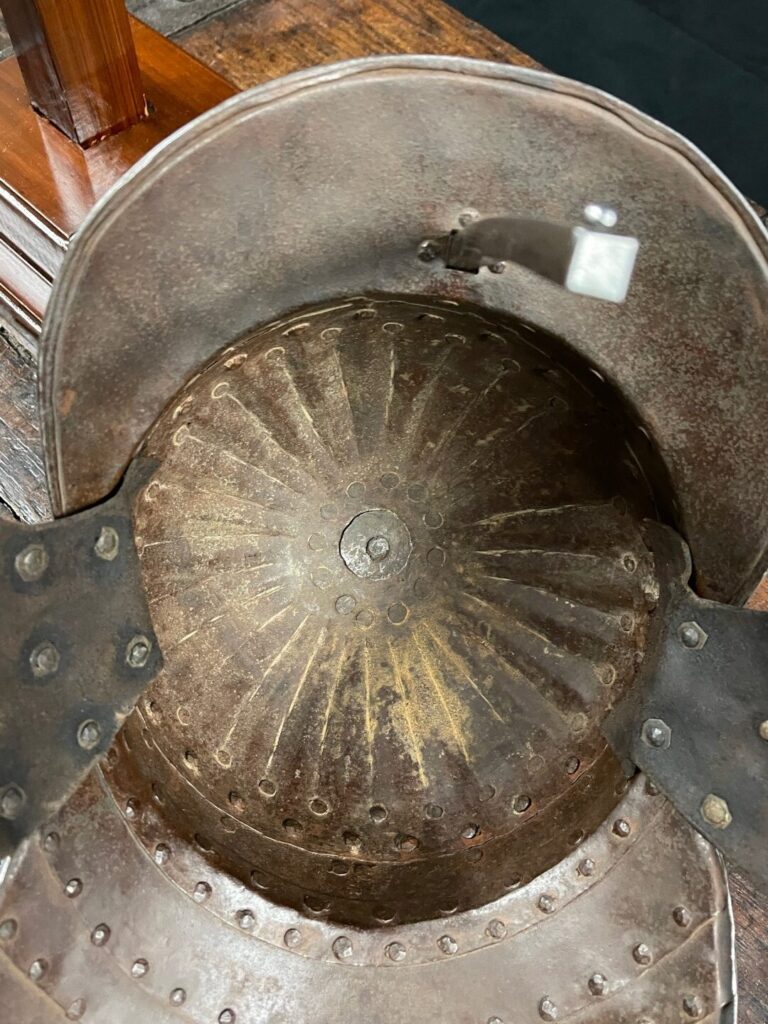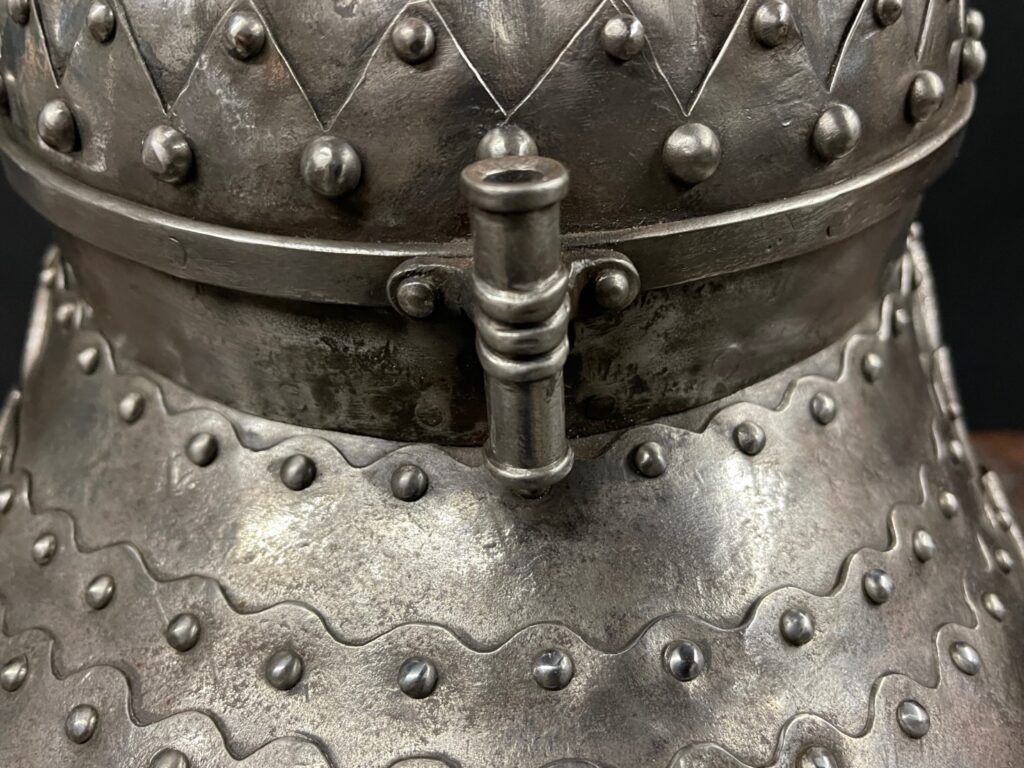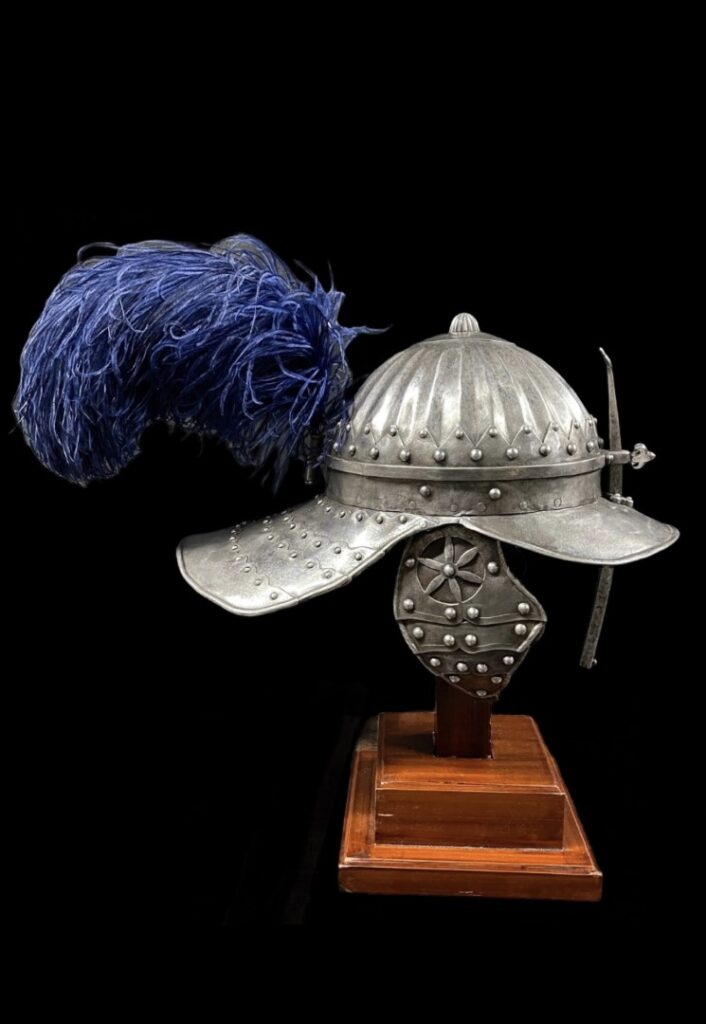1724) FLEMISH OFFICERS ZISCHAGGE CIRCA 1600: This is a very elegant officer‚ Zisch . A wealthy or high-ranking individual wore it. Probably one of the best I have had in 35 years!
Discussion: The Zisch has an interesting story. The Europeans copied it from the Turks, who called it a chichak or shishaks. For the complete story, see Armor in the Oriental Fashion, pages 267-#15 in my book. By circa 1600, the heavy lance began to go out of vogue, except for Scotland and Spain. The Germans continued to manufacture cuirassier armor much longer than England and other parts of Europe until circa 1650. The cuirassier was active as early as the English Civil War and in the Thirty Years’ War. By circa 1620, defensive armor changed to the mere armor a harquebusier would wear. The armor consisted of an open-face helmet such as a Zisch ; a cuirass was worn over a buff coat (which served the function of a mail shirt) and a bridle (long left-hand) gauntlet.
Description: Construction of superb quality and workmanship with a hemispherical skull formed in two medially joined pieces with rivets. There‚ a raised band around the base of the skull with decoration above and below it. Eighteen flutes radiate from a fluted sub-conical finial screwed through a washer in the form of a star at its apex. The fluting is decorated with incised lines separated by roped ribs. The visor of the skull projects slightly downwards to a broad blunt-pointed peak with both sides of the visor held together with three large rivets (two flat steel, one bronze domed). The visor is pierced at the center of the brow with a rectangular slot to accommodate a sliding nasal bar retained by a staple and a locking screw. The rear of the skull is fitted at the nape with a tapering, tubular plume holder and a sloping neck guard of four lames, each formed at its upper edge with alternating ogees, the lowest at the center of its lowest edge. Each side has a cheekpiece decorated with a hexagon perforated with holes at its center. The main edges are decorated with roped inward turns, and its surfaces are decorated with single and double-incised lines.
Comparable: Several examples in the Royal Armory (Armeria Real in Spain) are attributed to Jacques Vois of Brussels.
Conclusion: An elegant helmet of superb quality and construction that would look great in any collection or museum. A good value and priced to sell quickly!!!*
Contact Me To Get The Latest Lowest Price Possible From The Owner*

